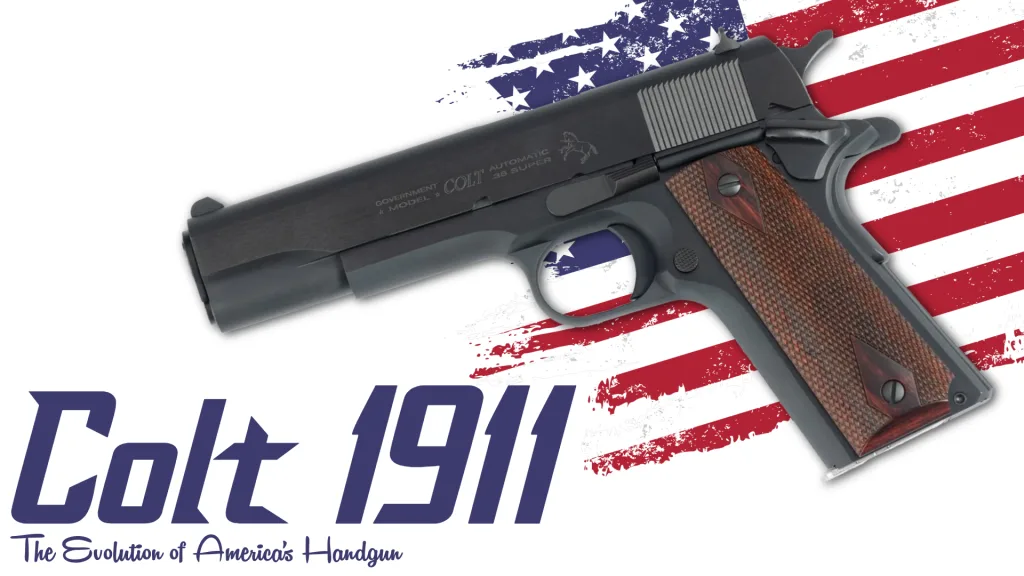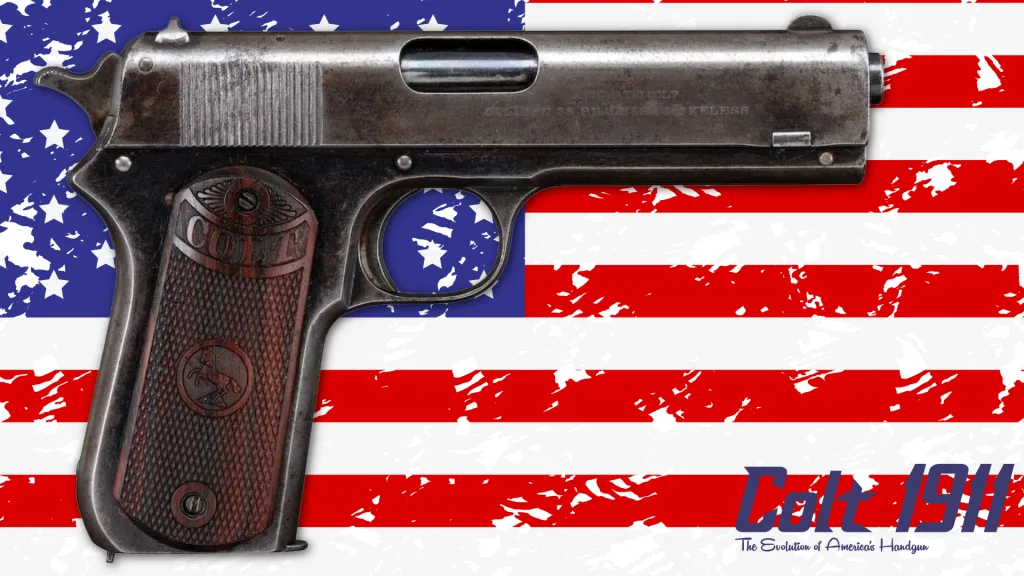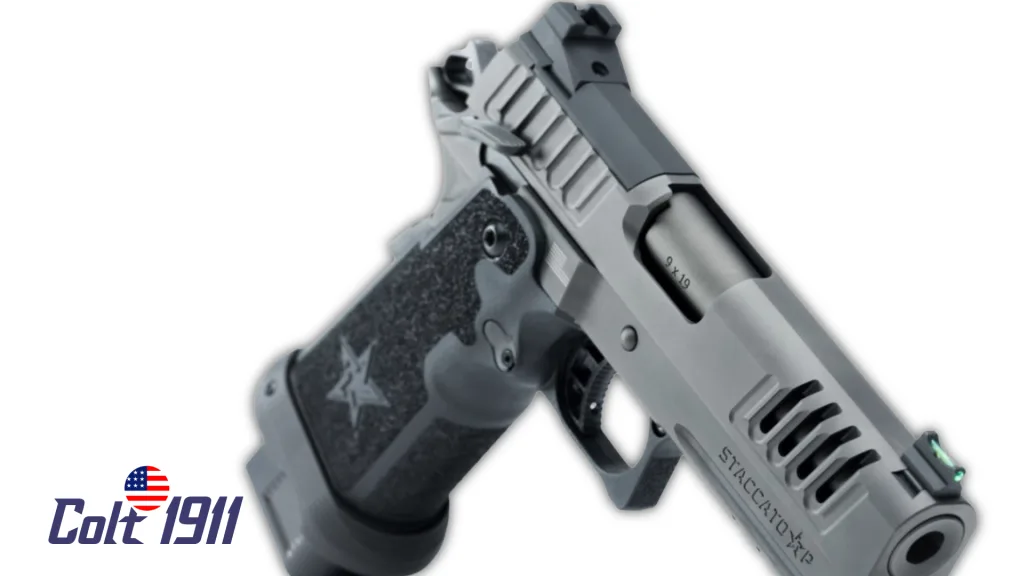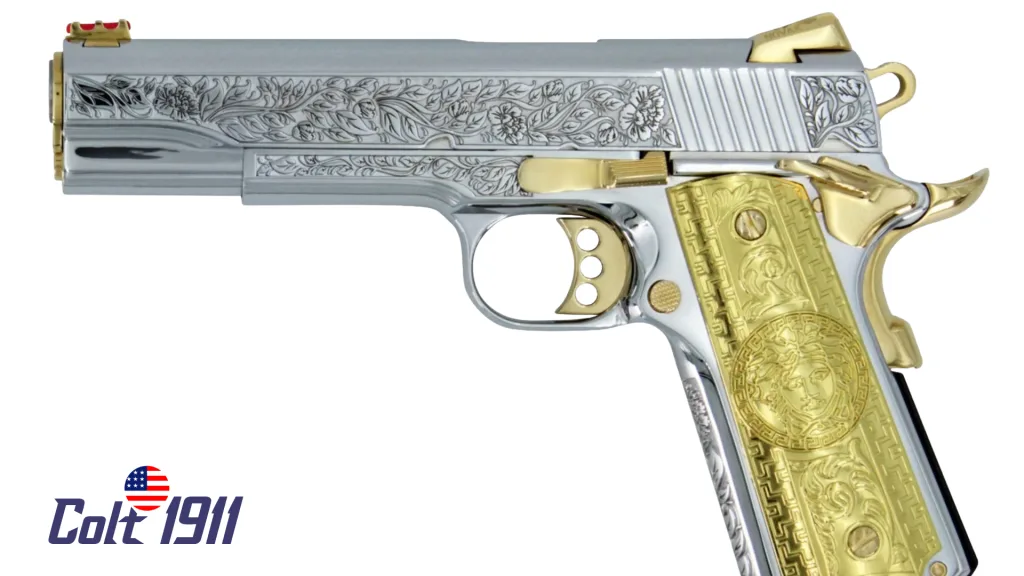
The Evolution of the 1911 pistol is more than a tale of technical innovation — it’s a story of timeless design adapting to meet new demands. From John Browning’s original 1911 to the modern, modular 2011 pistols, this journey charts the transformation of an icon. Whether you’re a collector, competitor, duty-carrier, or just someone who appreciates a crisp single-action trigger, understanding this evolution helps you appreciate why the 2011 platform isn’t just a trend — it’s the next chapter in a legendary lineage.
Evolution of the 1911 Pistol
The Colt M1911 wasn’t just another pistol. It was the brainchild of John Browning — a mechanical genius who knew how to blend simplicity with battlefield reliability. Adopted by the U.S. military in 1911, this semi-automatic handgun brought .45 ACP stopping power to American forces across two World Wars, Korea, Vietnam, and beyond. But, as decades passed, shooter needs evolved. What started as a steel-framed, single-stack workhorse eventually became the foundation for something bolder, faster, and more adaptable: the 2011.

What Made the 1911 So Special?
It’s hard to overstate the impact of the original M1911. Browning’s design introduced features that are now considered essential: a short-recoil operation, a locked breech, a single-action trigger, and dual safeties (grip and thumb). What’s more, the ergonomics fit a wide variety of hands surprisingly well, and the .45 ACP round packed serious punch. It didn’t just serve in wars — it became a competitive shooting staple and collector’s dream. Its balance, feel, and trigger set a standard still emulated today.
Why Did the 1911 Need an Update?
Times change — and so do tactical and competitive demands. By the 1970s and ‘80s, shooters wanted more rounds per mag, lighter materials, better corrosion resistance, and compatibility with optics. The single-stack 1911, for all its charm, couldn’t keep pace with double-stack polymer pistols like the Glock 17 or the CZ-75 in capacity or modularity. That gap opened the door to experimentation: what if the 1911 could evolve without losing its soul?

Double-Stack 1911 vs. Modular 2011: Two Evolutionary Paths
There are two main approaches to increasing the 1911’s firepower:
Double-Stack 1911 (One-Piece Frame):
Manufacturers like Para-Ordnance widened the grip frame to accept double-stack mags. The result? More ammo, but more weight and bulk, too. These pistols preserved the 1911’s internals and feel but lacked modularity.
Modular 2011 (Split Frame/Grip):
Enter the 2011 — a smart modular twist. Here, the serialized portion is a steel upper frame that houses the fire-control group and slide rails. Below that sits a separate grip module (often polymer or alloy) that accepts double-stack mags and can be swapped. This design lets manufacturers fine-tune balance, reduce weight, and modernize without losing the core feel of a 1911.
Who Made the 2011 Mainstream?
STI — now rebranded as Staccato — took the modular idea and ran with it. Their mission? Build competition- and duty-ready pistols with 1911 roots and 21st-century features. High-capacity mags, optics-ready slides, and perfectly tuned triggers became standard. Kimber entered the arena too, with the 2K11 series — another nod to the blending of tradition and innovation. These companies didn’t just ride the wave — they made it.
What Modern 2011 Pistols Bring to the Table
The modern 2011 is more than a facelift. Here’s what it offers:
- High Capacity: Most models come standard with 15–20+ round magazines in 9mm.
- Modular Frames: You can swap grips without replacing the entire firearm.
- Optics-Ready: Slides are often milled for red dots or ship with adapter plates.
- Better Ergonomics: Modern grip geometry fits more hands while managing recoil better.
- Advanced Materials: From Cerakote finishes to polymer grips and lightweight alloys, today’s 2011s resist wear and tear like never before.
- Example: The Staccato P — a duty-ready 2011 — features a 4.4” bull barrel, 18+1 capacity, optics cuts, and a polymer grip module that balances weight and control.
The Real-World Tradeoffs of a 2011
Weight vs. Performance:
Sure, some 2011s are heavy, especially all-steel versions. But modularity helps balance the load, especially when paired with polymer grip modules.
Cost vs. Customization:
With more parts comes more complexity. Replacement costs are higher, and customization requires more knowledge. But the upside? Near-unlimited tuning potential.
Legacy vs. Innovation:
The 2011 isn’t trying to replace the 1911 — it’s evolving it. Still, some purists prefer the old-school charm, simplicity, and feel of the original single-stack 1911.

Why the 2011 Matters to Different People
For Buyers:
If you want that silky 1911 trigger but need more ammo and red-dot readiness, a 2011 might be your perfect match.
For Retailers:
The 2011 is premium-priced but commands attention. Smart sales teams offer side-by-side comparisons: classic 1911 vs. 2011 vs. polymer pistols. Education sells.
For Content Creators:
Build a timeline graphic. Show the evolution from M1911 → M1911A1 → Para-style double-stacks → STI/Staccato modular 2011s. Use visual specs: mag capacity, weight, grip options.
A Quick Evolution Timeline
- 1911: John Browning’s design adopted by U.S. military
- M1911A1 (1920s–30s): Minor tweaks for better ergonomics
- Double-stack wide-body 1911s (late 20th century): Para-Ordnance leads the charge
- Modular 2011s (1990s–2000s): STI breaks new ground
- Modern 2011s (2010s–2020s): Staccato and others push red-dot ready, high-capacity platforms for duty, carry, and competition
FAQs Evolution of the 1911 pistol
Is a 2011 still a 1911 at heart?
Yes, especially when it comes to the single-action trigger feel and core function. But the frame and mag capacity are upgraded to meet modern needs.
Can I use 1911 parts in a 2011?
Some internals are cross-compatible, but many aren’t due to modular construction. Always check with the manufacturer.
Are 2011 pistols suitable for concealed carry?
Absolutely — especially compact models like the Staccato C2, which balance capacity and concealability.
What caliber do 2011s typically use?
Most 2011s today are chambered in 9mm for capacity and shootability, though .45 ACP and .40 S&W options exist.
Are 2011 pistols good for beginners?
They can be, but they’re best suited for users comfortable with manual safeties and who want high performance from day one.
Why are 2011s more expensive than 1911s?
You’re paying for modern materials, modularity, higher mag capacity, and optics-ready design — essentially a custom-grade platform out of the box.
Conclusion Evolution of the 1911 pistol
From the trenches of WWI to modern duty holsters and competition belts, the evolution of the 1911 into the 2011 proves that good design never really dies — it adapts. Whether you’re stepping up your carry rig, chasing better performance on the range, or just appreciating the lineage, the 2011 offers everything shooters love about the 1911 with the modern edge they need today. It’s not a replacement. It’s the natural progression — and it’s just getting started.
Check out our other great blogs HERE






